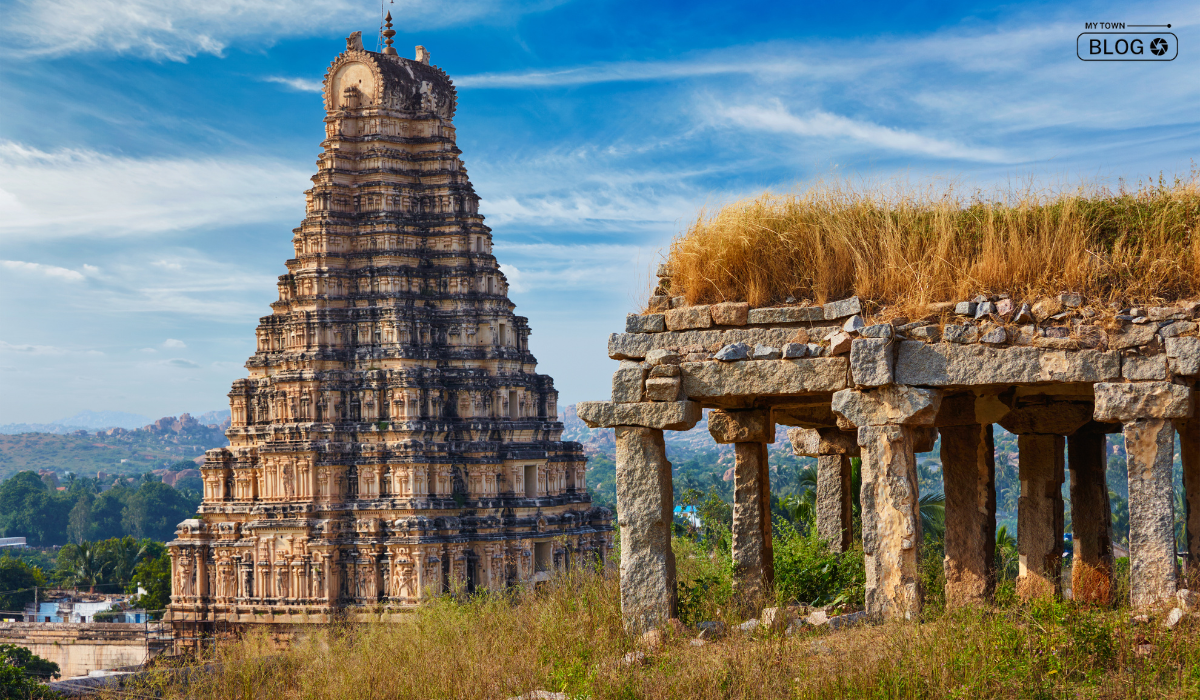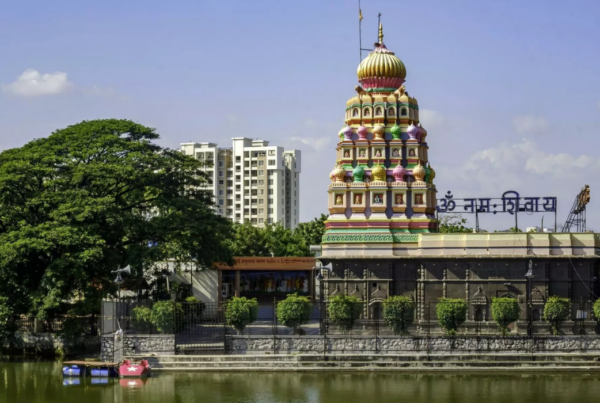Delve into the rich historical tapestry of Karnataka, adorned with landmarks and must-visit sites that narrate the captivating stories of a bygone era. As we explore historical places in Karnataka, these treasures also contribute to the broader narrative of Historical Places in India. From iconic landmarks to hidden gems, join us on a journey through the cultural and architectural wonders that make Karnataka a treasure trove for history enthusiasts.
Hampi – The Ruins of Vijayanagara Empire
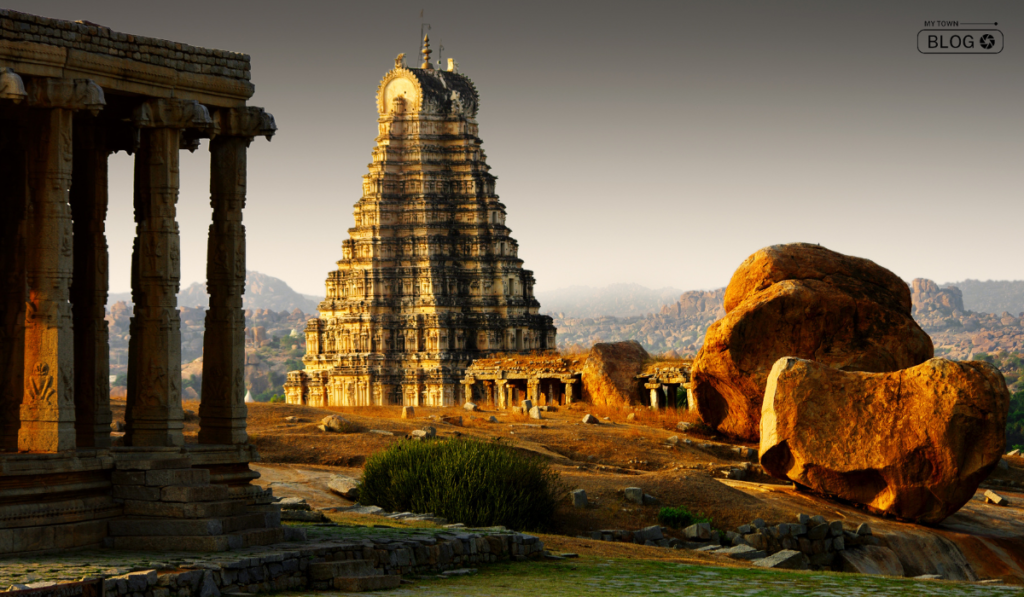
Discover the mesmerizing ruins of Hampi, a UNESCO World Heritage Site, where the echoes of the Vijayanagara Empire still resonate. As one of the prominent Historical Places in Karnataka, Hampi boasts the Virupaksha Temple and the Vittala Temple, standing as testaments to India’s architectural grandeur.
Badami – Cave Temples and Rock-cut Architecture
Badami unfolds its secrets through cave temples and rock-cut architecture, showcasing Hindu, Jain, and Buddhist influences. Amidst Historical Places in India, Badami’s Agastya Lake adds a serene touch to the surroundings, creating a picturesque backdrop to ancient marvels.
Belur and Halebidu – The Hoysala Marvels
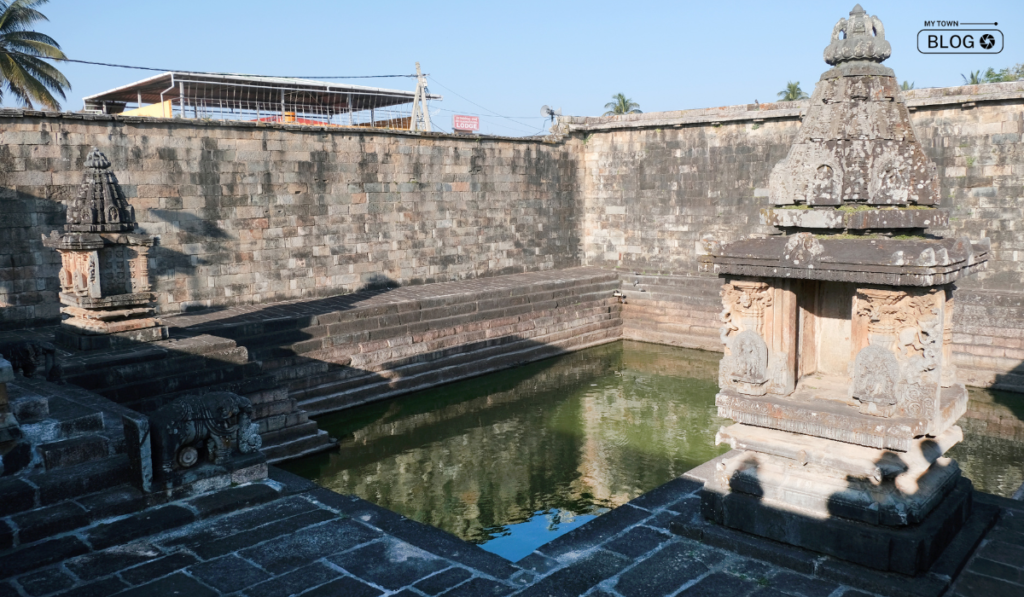
Immerse yourself in the artistic brilliance of the Hoysala dynasty at the Chennakesava Temple in Belur and the Hoysaleswara Temple in Halebidu. These Historical Places in Karnataka stand as architectural gems, contributing to the broader narrative of Historical Places in India.
Mysuru Palace – A Royal Extravaganza
The opulent Mysuru Palace, an Indo-Saracenic masterpiece, stands as a beacon of Karnataka’s regal history. This landmark, among the notable Historical Places in India, transports visitors to an era of royal grandeur and cultural richness.
Aihole – The Cradle of Chalukyan Architecture
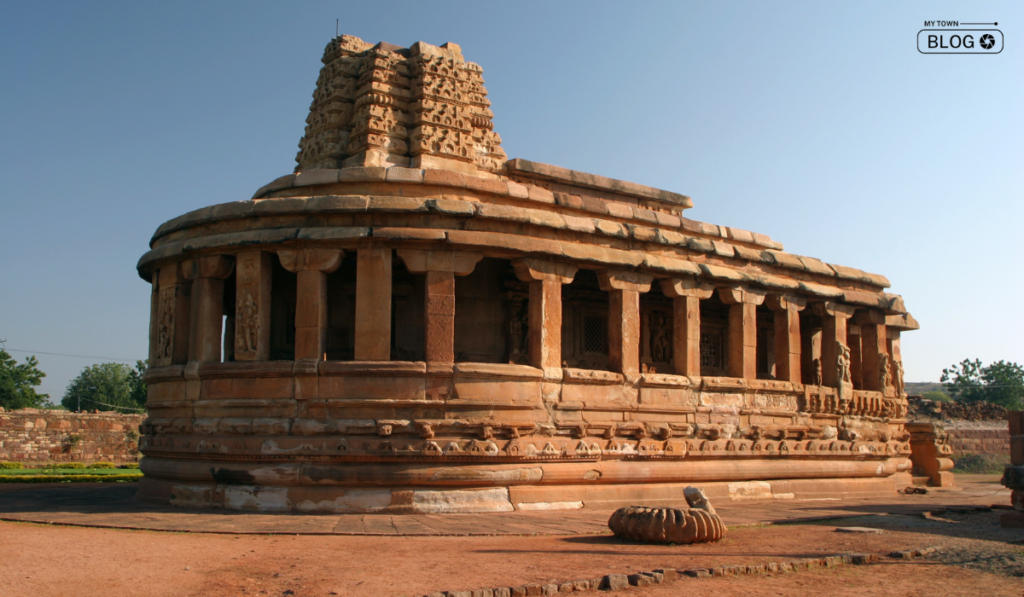
Aihole, often called the cradle of Chalukyan architecture, offers over 120 temples reflecting the evolution of Indian temple architecture. These Historical Places in Karnataka contribute significantly to India’s diverse cultural heritage.
Gommateshwara Statue, Shravanabelagola
Ascend Vindhyagiri Hill to witness the colossal Gommateshwara Statue, a monolithic marvel dedicated to Lord Bahubali. As a prominent landmark in Karnataka, this statue adds to the cultural mosaic of Historical Places in India.
Bidar Fort – A Testament to Bahmani Heritage
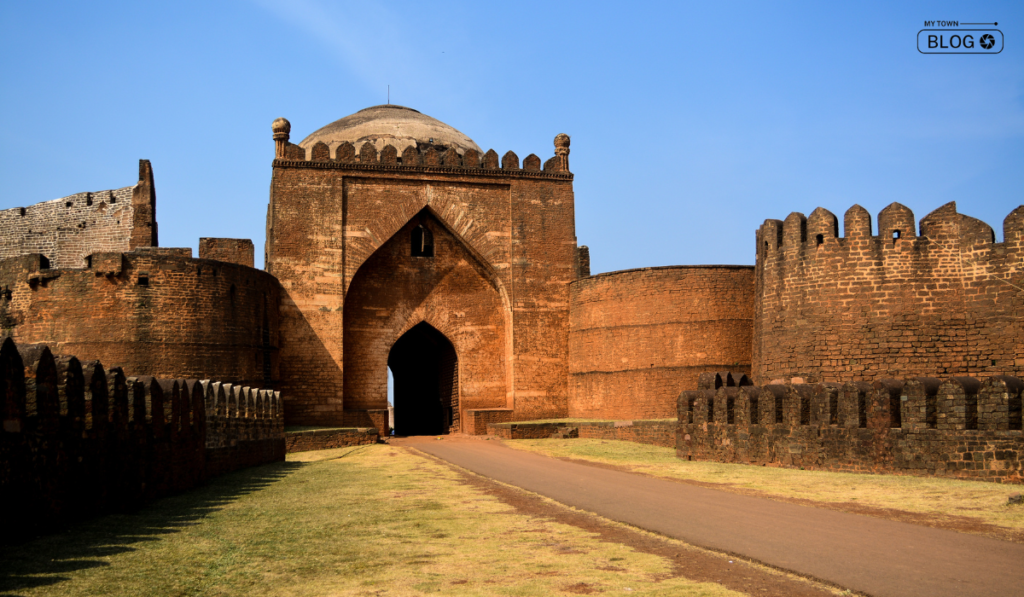
Bidar Fort, with its Rangin Mahal and Gagan Mahal, unfolds the legacy of the Bahmani Kingdom. As one of the distinctive Historical Places in Karnataka, Bidar Fort also contributes to the broader narrative of Historical Places in India.
Pattadakal – Fusion of Dravidian and Nagara Styles
Pattadakal, a UNESCO World Heritage Site, showcases the harmonious fusion of Dravidian and Nagara architectural styles. Amidst Historical Places in India, Pattadakal’s Virupaksha and Mallikarjuna temples add to the architectural diversity of the subcontinent.
Srirangapatna – Tipu Sultan’s Island Capital
Srirangapatna, the island town and de facto capital of Tipu Sultan, provides a glimpse into the history of the Tiger of Mysore. As a unique historical landmark in Karnataka, Srirangapatna contributes to the broader narrative of Historical Places in India.
Gulbarga Fort – A Fortress of History
Gulbarga Fort, with its Jama Masjid and Haft Gumbaz, narrates the history of the Bahmani Sultanate. This historical landmark in Karnataka becomes a part of the grand tapestry of Historical Places in India.
Conclusion
As you traverse the historical marvels of Karnataka, you not only explore the rich heritage of the state but also contribute to the larger narrative of Historical Places in India. From the iconic ruins of Hampi to the regal Mysuru Palace, each site unfolds a unique chapter in the story of India’s cultural diversity and historical significance. Plan your visit to these landmarks, and let the history of Karnataka resonate with the broader historical narrative of India.
FAQs
How old are the ruins of Hampi?
The ruins of Hampi date back to the 14th century, representing the Vijayanagara Empire’s glory.
What is the significance of Agastya Lake in Badami?
Agastya Lake in Badami adds a serene backdrop to the historical site and enhances its spiritual ambiance.
How do Belur and Halebidu contribute to India’s cultural heritage?
The Chennakesava Temple in Belur and the Hoysaleswara Temple in Halebidu are architectural gems, contributing to India’s diverse cultural heritage.
What architectural style does Mysuru Palace showcase?
Mysuru Palace exhibits Indo-Saracenic architecture, reflecting a blend of Indian, Islamic, and Gothic architectural styles.
How does Aihole showcase the evolution of Indian temple architecture?
Aihole boasts over 120 temples that showcase the evolution of Indian temple architecture over centuries.
What is the historical significance of the Gommateshwara Statue in Shravanabelagola?
The Gommateshwara Statue in Shravanabelagola is a monolithic marvel that contributes to Karnataka’s landmarks and adds to the cultural mosaic of Historical Places in India.
How does Bidar Fort contribute to Karnataka’s historical significance?
Bidar Fort unravels the legacy of the Bahmani Kingdom, becoming part of the grand narrative of Historical Places in India.
What is the architectural diversity showcased in Pattadakal?
Pattadakal, a UNESCO World Heritage Site, displays a harmonious fusion of Dravidian and Nagara architectural styles, contributing significantly to India’s architectural diversity.
